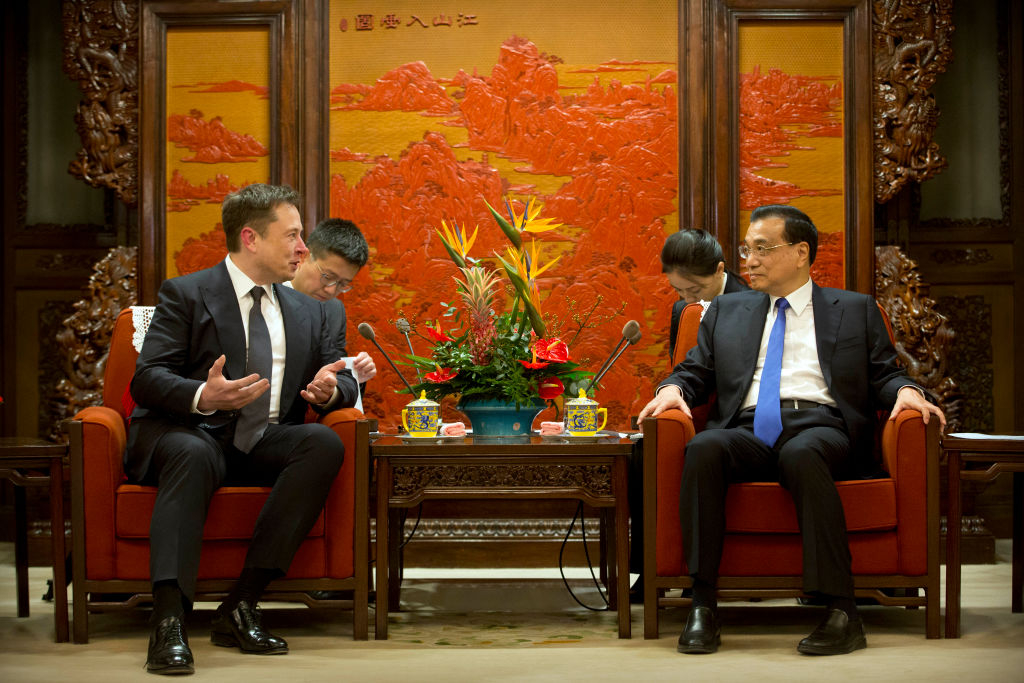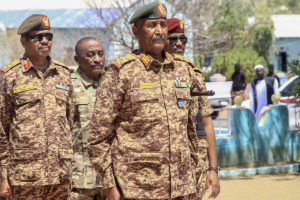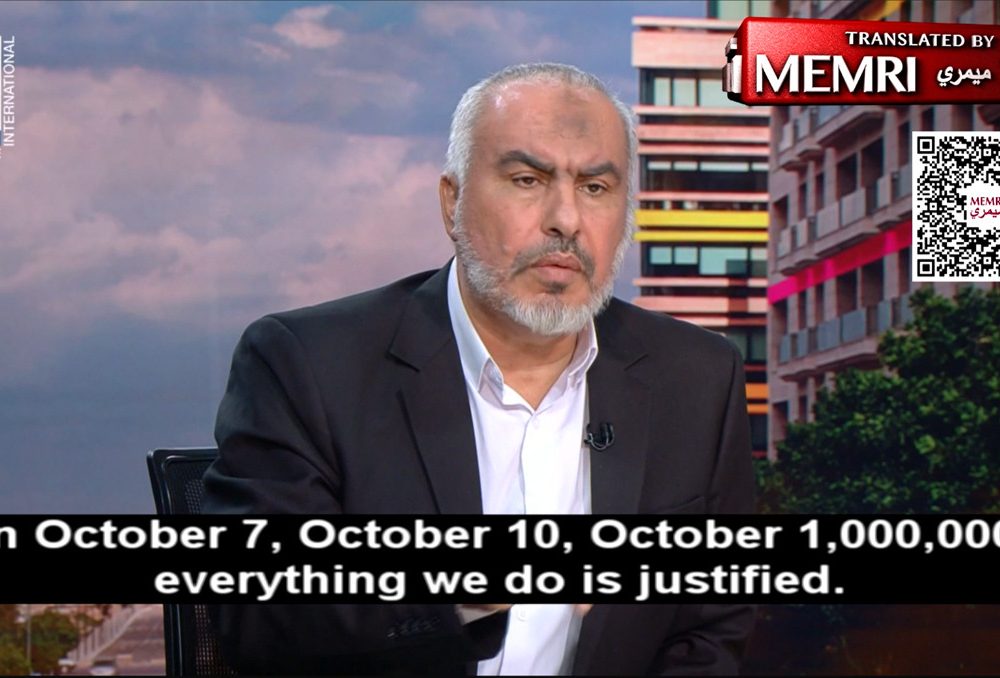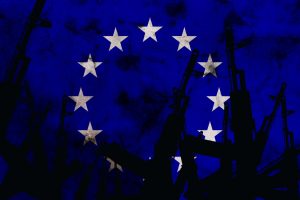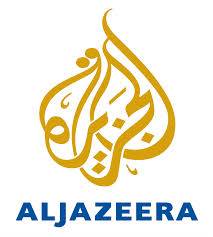Ibyago bizaba ku gihugu cya Tanzania,intara ya kagera,mu karere ka Karagwe.
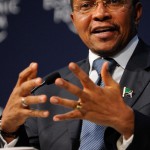
Ibyago bizaba ku gihugu cya Tanzania,intara ya kagera,mu karere ka Karagwe.
Kuwa 16th kanama 2014,nerekwa ibyago bizagwira igihugu cya Tanzania intara ya KAGERA akarere ka KARAGWE,njyanwa mu iyerekwa mbona muri iyo ntara hahoze hatuye ubwoko bw’Abanyarwanda «Abatutsi»bakomoka mu gihugu cy’Urwanda.Baje gutaha igihugu cyabo nyuma y’imyaka 35 y’ubuhunzi.
Murisho Kikwete
Mbona muri ako karere haguye imvura yamahindu ikomeye cyane,kuburyo isura yako karere yahindutse ntihongera gusa nk’uko hasaga cyera mu ishusho y’umwimerere,ubutaka bwaho bwahuye nakaga gakomeye cyane kuko ukop isi yahoo yariteye,yahise ihinduka.
Kubera umwuzure wa mazi yatewe niyo mvura,hahise hamera imisozi,kandi nyamara mbere nta misozi yaharangwaga,nuko nerekwa umuhanuzi mukuru ajya kureba aho hantu uko hahindutse,mbona imbere ye,ayobowe n’umwuka w’inzika ariwo wagendaga umwereka inzira anyuramo kuko inzira,imihanda,utuyira,imiharuro bya mbere byari bayarasibanganye.
Ako gace ntabwo kongeye gturamo abari bagatuyemo,kubera isi yahoo yahise icurama kuburyo nta muntu wakonegra kuhatura,nuko ntangazwa nayo makuba yagwiriye ako karere ka KARAGWE.

Gusa beneho bigeze kuba batuye icyo gihugu nyuma bakaza kucyamburwa,hagahabwa abatari abene gihugu,mbona barahirukanywe,abari bahaifte nka gakondo yabo,bakaza kuhava bajya muri gakondo yabo,nubundi bazahagaruka kuko ari gakondo bahoranye.
Ibiroli byogushimira ibihugu byafashije Umwami w’Urwanda Kigeli V.Ndahinduirwa kubona independence y’Urwanda n’Uburundi.
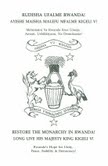
Amakuru inyangenews yaraye ivuye gutara mu gihugu cy’America,aho Umwami w’Urwanda amaze imyaka irenga mirongo 50 y’ubuhunzi,inyange yageze ahaberaga inama yakererewe kubera indege yagiye ikererwa mu mihanda kubera gutinya gukora impanuka.Igeze mu murwa mukuru wa America Washington DC,ahaberaga iyo nama,yasanze inama irimo kurangira.
Ariko amwe mu magambo yasozaga inama,yumvise havugwa yuko,inzego z’Uwami w’Urwanda Kigeli V Ndahindurwa,urwego ngishwa nama(Cabinet)urwego rw’Abahuza bikorwa(Executive)urwego rw’Itumanaho(Communication)izo nzego zarangije inama zemeranyije ko,bagiye gutegura umuhango wo gushimira ibihugu byafashije Umwami w’Urwanda kubona ubwigenge bw’Urwanda n’Uburundi.
Icyo gikrwa cyari cyarakozwe ubwo umuryango wa ONU wemereraga Umwami w’Urwanda,guhabwa ubwigenge yasabiye abanyarwanda n’Abarundi,ubwo Ababiligi barwanyaga icyo gikorwa aho bashakaga ko,ubwo bwigenge buhabwa abahutu batigeze basaba ubwingenge dore batari bazi aho biva naho bigana,muri uwo muhango wokwakira ibaruwa yo kwemererwa ubwigenge Umwami w’urwanda yashimiye ibyo bihugu bikomeye byamugejeje kugikorwa nyirizina.
Na none inzego z’Umwami w’Urwanda zabonye ko,ari byiza kandi bikwiye ko,bakongera guhamagaza ibyo bihugu by’ibihangange bakongera kubishimira ndetse bakaboneraho umwanya wokubwira ibyo bihugu ko,igihe cyo gutahuka k’Umwami w’Urwanda cyegereje kandi ko,gisohoye.
Bityo bakongera gutera ingabo mubitugu Umwami w’Urwanda muri uwo muhango wo gutahuka mu mahoro ashingiye ku nyandiko zimuha uburenganzira gutahuka mu gihugu nk’umukuru w’igihugu ubyemerewe nmategeko ubwami bugendera ku itegeko nshinga Monarchy constitutional .

Kubera gukererwa ku inyange ntabwo inyange yamenye igihe n’umunsi n’italiki n’ukwezi.n’umwaka uwo muhango uzabera,kandi ntabwo yarigutinyuka kubaza kuko yari yatumiwe mu nama aliko arakererwa,ibyo rero bikaba ataramakosa y’inyange cyangwa abayoboraga inama,ahubwo n’ibibazo by’urugendo,ariko inyange izakomeza kubakurikiranira hafi cyane iby’uwo muhango uzajya kongera kuba twamenye amakuru yose y’imvaho.
Ibintu byasobanutse,abashaka ubukire bwa satani,ntakibazo kigihari nugukora amahitamo.
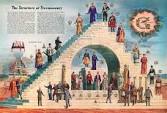
FREEMASON MEMBERSHIP REGISTRATION (illuminati) THE CLUB OF THE RICH AND FAMOUS IN AFRICA: JOIN US TODAY HomeWhy Join Freemasonry Register with us now,to be famous
and rich home why join freemasons Contact Us join procedure Benefits illuminati Order join illuminati FAQS illuminati countries HOME MEMBERSHIPREGISTRATION FEES. KSH 7,000 Other countries: USD $180 Kenyans must send Membership Registration Fee By MPESA TO 0707788838 Please do not call us if your not paid your registration fee Again last warning If you cannot afford membership Registration fees Do not attempt to call or email us to request for membership into illuminati or freemasonary .
If you violate this warning you will be severely panished. Join illuminati freemasons from
other countries, please call us on the number below. +254707788838 REGISTRATION DEADLINE DATE: 15th June 2014 INTRODUCTION TO FREEMASONRY It is a well-known fact that Freemasonry consist of Multi Millionaires, Billionaires who have major influence regarding most global affairs, including the planning of a New World Order. Many world leaders, Presidents, Prime Ministers, royalty and senior executives of major Fortune 500 companies are members of Freemasonry. Now, for the FIRST TIME IN HISTORY, we are opening our doors to themasses.
If you would like to Join Freemasonry,Just register with us today. FREEMASONRY RECRUITMENT PORTAL What is Freemasonry? It is one of the world’s oldest fraternal societies. Ancient Freemasonry’s lessons of moral values (governing relations between people) and its acknowledgement, without crossing the boundaries of religion, that all depends on the providence of God, apply today with as much force as they did when it took its modern form at the turn of the 17th century. Freemasonry has “secrets” (used in proof of membership) but it is not a secret society.

Some of its internal affairs are private and Freemasons incline to reticence about their membership because they are taught not to use it to advance their own interests. Although all Masons are required to profess and continue in a belief in a Supreme Being, and their ceremonies include prayers, Freemasonry is no substitute for religion: it has and can have no
theological doctrines; it offers no sacraments, and does not claim to lead to salvation.
The Essential Qualification for Membership The essential qualification foradmission into and continuing membership is a belief in a Supreme Being. Membership is open to men of any race or religion who can fulfill this essential qualification and are of good repute.
Freemasonry and Religion Freemasonry is not a religion, nor is it a substitute for religion. Its essential qualification opens it to men of many religions and it expects them to continue to follow their own faith.
It does not allow religion to be discussed at its meetings. Freemasonry and Politics Freemasonry is non-political, and the discussion of politics at Masonic meetings is forbidden.
The Three Great Principles For many years Freemasons have followed three great principles:
1. Brotherly Love Every true Freemason will show tolerance and respect for the opinions of others and behave with kindness and understanding to his fellow creatures
2. Relief Freemasons are taught to practicecharity, and to care, not only for their own, but also for the community as a whole, both by charitable giving, and by voluntary efforts and works as individuals.
3. Truth Freemasons strive for truth, requiring high moral standards and aiming to achieve them in their own lives. Freemasons believe that these principles represent a way of achieving higher standards in life.
Charity From its earliest days, Freemasonry has been concerned with care of orphans, the sick and the aged. This work continues today. In addition, large sums are given to the national and local charities. Freemasonry and Society Freemasonry demands from its members a respect for the law of the country in which a man works and lives.
Its principles do not in any way conflict with its members’ duties as citizens, but should strengthen them in fulfilling their public and private responsibilities. The use by a Freemason of his membership to promote his own or anyone else’s business, professional or personal interests is condemned, and is contrary to the conditions on whichhe sought admission to Freemasonry.
His duty as a citizen must always prevail over any obligation to other Freemasons, and any attempt to shield a Freemason who has acted dishonorably or unlawfully is contrary to his prime duty.
Secrecy The secrets of Freemasonry are concerned with its traditional modes of recognition. It is not a secret society, since all members are free to acknowledge their membership and will do so in response to enquiries for respectable reasons.
Its constitutions and rules are available to the public. There is no secret about any of its aims and principles. Like many other societies, it regards of its internal affairs as private
matters for its members.
Conclusion
A Freemason is encouraged to do his duty first to his God (by whatever name he is known) through his faith and religious practice; and then, without detriment to his family and those dependent on him, to his neighbor through charity andservice.
None of these ideas is exclusively Masonic, but all should be universally acceptable. Freemasons are expected to follow them! HOW TO JOIN FREEMASONRY The first stage is usually the Initiation Stage.Immediately after the Initiation, new members are given a Money
Awards equivalent to USD $300,000 to reorganize their Lives in-order to fit the class andstatus of the clubmembers.
Others Money Awards are communicated after the Initiation stage. However this is the basic
requirements needed during the Initiation Stage. Membership Initiation Fees:Kenyans: Kshs 7,000 Other Countries:USD $180 First Money Reward given to New
Members after Joining Freemason: USD $300,000 If you can afford the above requirement, please call us or send an Email to confirm your acceptance so that we can tell you how to go about the payment and how you can the Freemason Membership Registration Form.
Once you make the Payment and after filling and submitting the Registration Form,you are then invited to the Freemason Lodge where you undergo the Initiation Ceremony.
Five days after the Initiation Ceremony, you are then Invited to an Awarding Ceremony where you are rewarded with USD $300,000 his Money is to enable you change your Lifestyle and your standards of Living so as to match with that of the Club Members. Money Awards afterInitiation: USD $300,000
NB: Freemason International Provides equal opportunity to all.We aim to empower our members Financially,Socially and Spiritually. The Master of Dunedin Lodge, W:.Mike Palenik (right), congratulates Deputy Todd Hoddinott.
Looking on is the Deputy’s wife, Lisa. A Thanksgiving Prayer Oh, Lord, now this we’re thankful for: The good things life has held in
store; The love of those within our home, And friends to greet wherever we roam; The health and strength wherewithto toil, The bounteous food from freedom’s soil; We thank Thee for the right to pray And worship Thee in our own way; To live within a land that’s free; For this, dear Lord, our thanks to Thee; And through these blessings, one by one, May Thy will, Lord, on earth be done! FAMOUS FREEMASON MEMBER SWould you like to know some of the most famous Freemasons and what they do for a living.
They are very Influential,PowerfulRich and Famous.
Ibintu birashyushye mubatavuga rumwe n’ubutegetsi bwa kigali,amakuru aturuka muri USA,mubanyamuryango ba RNC ihuriro nyarwanda ritavuga rumwe nubutegetsi bwa kigali ngo biteguye gukora imyigaragambyo aho bazamagana umunyagitugu Paul Kaga uyoboye uRwanda m
Ibintu birashyushye mubatavuga rumwe n’ubutegetsi bwa kigali,amakuru aturuka muri USA,mubanyamuryango ba RNC ihuriro nyarwanda ritavuga rumwe nubutegetsi bwa kigali ngo biteguye gukora imyigaragambyo aho bazamagana umunyagitugu Paul Kaga uyoboye uRwanda muburyo butemewe namategeko.
 Twashatse kumenya imyiteguro y’ ihuriro nyarwanda RNC,aho yaba igeze,avugana n’inyangenewss,akaba atifuza ko,amazina ye,yashyirwa ahagaragara,yadutangarije ko,imyiteguro ngo yaba igeze kure kuko bamaze gutanga umusanzu kubanyamuryango bazajya kwamagana umunyagitugu Kaga Paul ubwo azaba agiye mu nama I washingiton DC muri America.
Twashatse kumenya imyiteguro y’ ihuriro nyarwanda RNC,aho yaba igeze,avugana n’inyangenewss,akaba atifuza ko,amazina ye,yashyirwa ahagaragara,yadutangarije ko,imyiteguro ngo yaba igeze kure kuko bamaze gutanga umusanzu kubanyamuryango bazajya kwamagana umunyagitugu Kaga Paul ubwo azaba agiye mu nama I washingiton DC muri America.
Twibutse ko iyo nama izabera muri America yatumijwe n’igihugu cy’America bakaba baratumiye abakuru bibihugu by’umugabane w’Afrika,mubatumiwe n’umukuru w’uRwanda Kaga Paul nawe arimo akaba yitezwe kuzakirwa nabatavuga rumwe n’ubutegetsi bwe,badutangarije ko,bazamwakiriza indirimbo nziza zijyanye n’igihe tugezemo.
Igikomeje gutangaza abantu n’uburyo bazamubyinira,ariko amakuru aturuka ikigali yemeza ko,rwose Paul Kaga atifuza kwikirwa n’ihuriro nyarwanda RNC,kubera uburyo mu mpera zuyu mwaka aherutse kubaca igihanga aho yaciwe igihanga cy’umuyobozi washinze iryo huriro nyarwanda RNC Col.Patrick Karegeya akaba umwe mubashinze iryo huriro nyarwanda.
Leta y’uRwanda isa naho yaciye intege uyu mutwe utavuga rumwe n’ubutegetsi bw’igitugu bwa fpr,kuko nyuma y’ipfa rya Col.Patrick Karegeya,abanyarwanda bo mu bwoko bw’Abahutu bamwibonagamo babifashijwemo n’umunyemari Kabuga Feliciani.
Uyu munyemari yaje gushyiramo umukwe we,Dr.Paulini Murayi maze nyakwigendera Patrick Karegeya aho yitabiye Imana,Murayi nawe yahise akuramo ake karenge,Nyakwigendera arashimirwa ubutwari yari yagize bwo guhuza abanyarwanda b’ingeri zose kugez’ubu bikaba bigoye kugirano hazaboneka undi muntu wahuza abanyarwanda cyane ko,bena abo bantu leta y’uRwanda ibatinya cyane kuko guhuza kwabanyarwanda nizo mbaraga zabo.
Ibyo akaba aribyo amahanga ahora asaba abarepubulike abatavuga rumwe na Paul ariko bikaba byarabananiye,ubu rero abanyarwanda bakaba barangamiye Umwami w’Urwand awenyine kuko niwe kugez’ubu udafite amaraso mu kiganza akaba ari nawe wemewe namahanga kaba agifatwa nk’umuyobozi w’uRwanda.
Reka dutegereze kuko hasigaye iminsi micye ngo turebe ibirori byo kuzakira umukuru w’igihugu cy’uRwanda ubwo azaba ageze muri America dore ko,iyo agize amahirwe yo kujyayo wagirango agiye mu ijuru,ariko akaba afite icyibazo kuko izina rye ryari ryaramamaye rimaze gusibangana aho asigaye yitwa umwicanyi umunyagitugu nawe ubwe akaba yarabyiyemereye ko,abamurwanya nabaca murihumye azabaca iogihanga.
inyangenewseditor@gmail.com
Ibihumbi $200.000 nibyo kwica Gen.Kayumba Nyamwasa!

jack nziza< jack.nziza@yahoo.co.nz> KABUNO KA NYOKO se, 200.000$ ko ari ayo kugura abari abagabo nka Kayumba n’ingariisi nkawe y’inzererezi niko ihabwa.
Ese ko wandika mu kinyamakuru ibyo nakwandikiye, ntushyireho ibyo nawe wansubije, uri igisebe cy’umuvogo kimwe cyabaye umufunzo kuri nyiracyo.
Ngiye mu mushyikirano nyuma y’I cyumweru ningaruka nzasange inkuru zose wanditse kuri President n’umufasha we wazihanaguye.

I giciro tuzaguha icyo mayibobo nkawe zihabwa.
nccleon@gmail.com Sinshobora kuzisiba ngo kuko wabivuze!Usabwe kunyubaha no kwicikisha bugufi imbere yanjye kuko niwowe unkeneye jyewe singukeneye habe nagato!Uzagaruka uzisanjyeho uzagire umushyikirano mwiza ndibaza ko ari uwo kumena amaraso!!!








